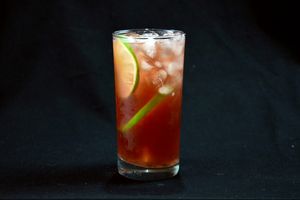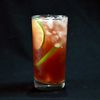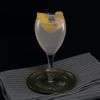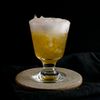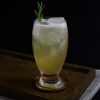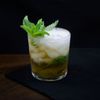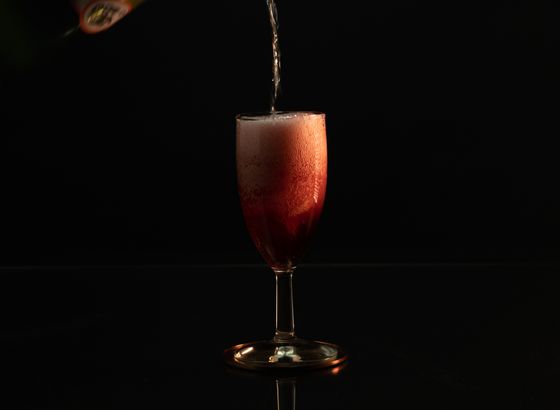 NO
215
NO
215
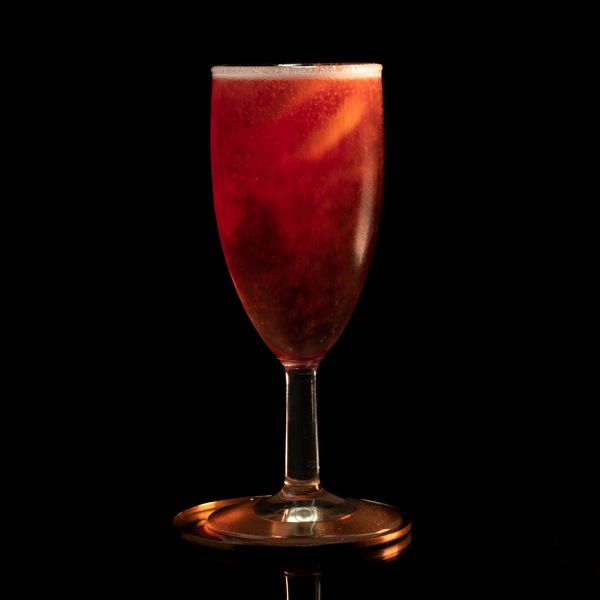
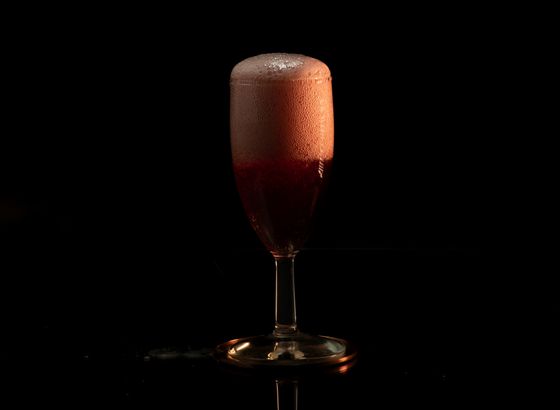
How simple must a recipe be before it isn’t worth writing about? The verdict seems to have already arrived on the Jack and coke or the vodka soda, as not a single cocktail book we own bothers to print them, yet similarly simple drinks with fancier names—like the Moscow Mule, Death in the Afternoon, and Paloma—are beloved by the collective cocktail authorship for satisfying their never ending pursuit of easy deliciousness. In our case, a subtle fresh twist was all that was needed to make the Paloma worth writing about. With the Death in the Afternoon, a fun story and surprisingly excellent flavor profile could carry the weight. As for the Moscow Mule, well, you can pencil us in as “no comment.”
If you peruse the flowing river of online content written about the Kir Royale, you will see attempts to carry the drink through historical storytelling. This is a fair angle, since the drink has origins in the French resistance during World War II. If you would like to learn more about this, most of the content appears to originate with a 2015 article in the Wall Street Journal. Here, we’re going to focus on the details: what makes this drink great, what kind of sparkling to buy, and what kind of purple stuff should be mixed in (and how much).
First, we’re going to convince you to make this cocktail. This step shouldn’t be overlooked, because we didn’t bother to make this cocktail for years. It just didn’t interest us. While indeed the ingredient list is short and there are more exciting things to do with creme de cassis, the return on investment with this drink is uncanny: the tangy cassis blends perfectly with the bouquet and acidity from the wine, all culminating in a fruity blast on the finish that lingers memorably. If you have a mediocre bottle of sparkling wine lying around and want something fun and aesthetically gorgeous, this drink is worth a spin—particularly at parties, dinners, dinner parties, dinners that are already too complicated without adding in cocktails, or anytime ease outweighs everything.
You will see variations on this recipe that call for Chambord or raspberry. Ignore these. This drink is magnificent with crème de cassis, and it really is the premiere way to try the sugary stuff. Modern diners don’t consume after-dinner dessert drinks anymore, and crème de cassis is rarely called for in classic cocktails, which means for many: this is it. Lejay is our go to Cassis, partly because it is excellent, but also because they sell it in smaller bottles. As aforementioned, there are very few reasons to drink crème de cassis and getting through even a few ounces can take years. You will likely not need a full-sized bottle.
The amount of cassis added to this drink is the only variable element and will mostly depend on the sweetness of the sparkling you use. As a baseline, here is how we begin: for a sweeter drink, you can do a one to three ratio. For something more balanced, try three-quarters of cassis and three-and-a-quarters ounce sparkling. For a very dry drink that emphasizes the sparkling, use a half ounce of cassis and three-and-a-half ounces sparkling. No matter what, we recommend a dry sparkling for this recipe, since cassis is already quite sweet. Because this drink is made in the glass, it is easy to mix one for yourself, try it, and then adjust. Finally, we like this drink with a small lemon twist. It will add just a hint of lemon flavor, but more importantly, it will excite the bubbles in the wine and create a beautiful sparkling effect in the glass.


